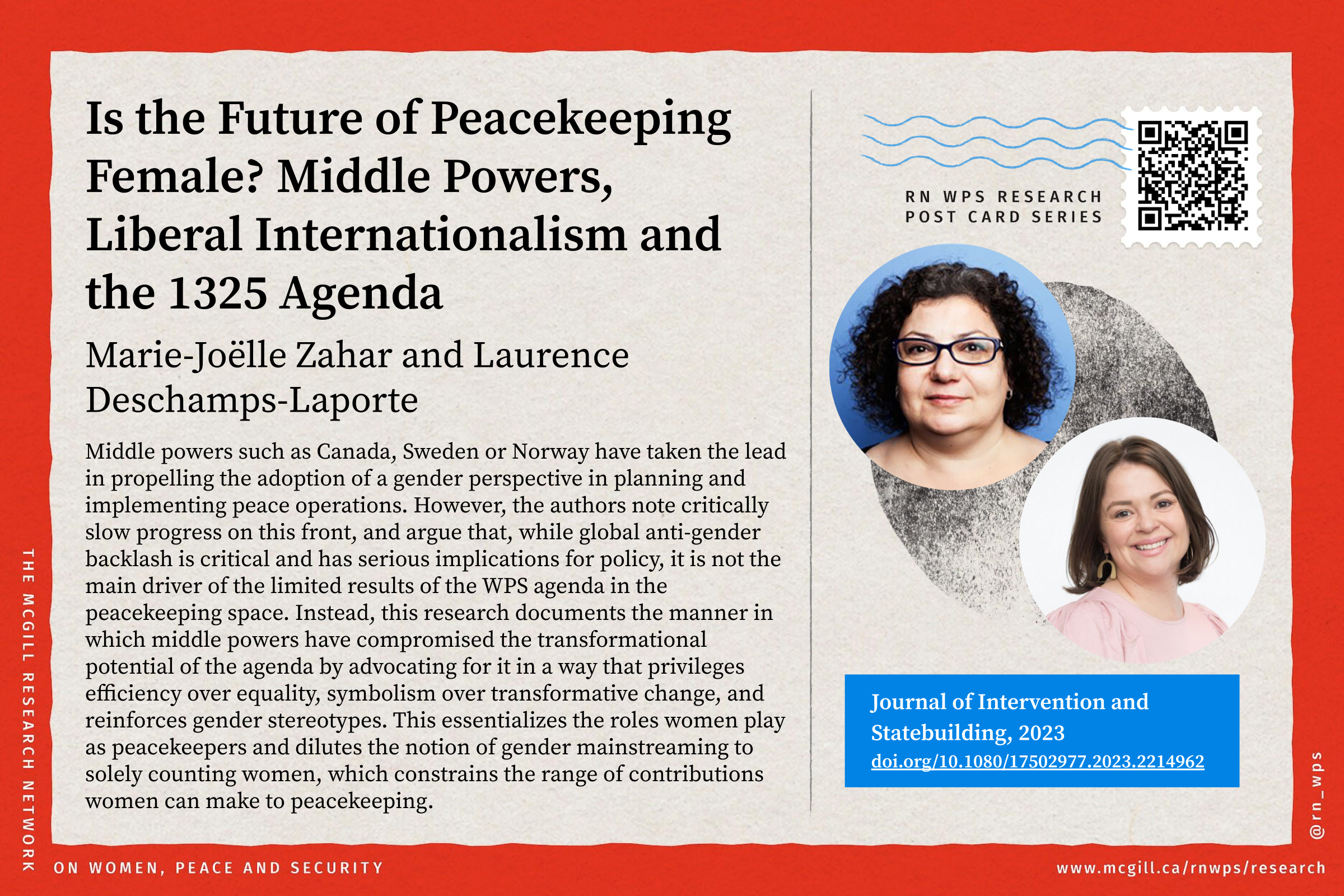Research Network on Women, Peace and Security launched a new series, 'Research Postcards', to feature and summarize the recent work of their network members. The series aims to increase the representation and discoverability of the research conducted by their members.
Rethinking women, peace, and security through the localization of UNSCR 1325 & National Action Plans: A study of Nepal and Sri Lanka by Luna K.C. and Crystal Whetstone
 Women’s Studies International Forum, 2022 doi.org/10.1016/j.wsif.2022.102575
Women’s Studies International Forum, 2022 doi.org/10.1016/j.wsif.2022.102575
Indicators and Success Stories: The UN Sustaining Peace Agenda, Bureaucratic Power, and Knowledge Production in Post-War Settings by Maria Martin de Almagro Iniesta

International Studies Quarterly, 2021 doi.org/10.1093/isq/sqab059
“Justice is Lived”: Women’s Senses of Justice and Reparations After Wartime Sexual Violence in Northern Uganda by Ketty Anyeko

War Myths and the Normalization of PTSD and Military Suicide: The Military Suicide Equation by Megan MacKenzie and Nicole Wegner
 International Political Sociology, 2022 doi.org/10.1093/ips/olab033
International Political Sociology, 2022 doi.org/10.1093/ips/olab033
Is the Future of Peacekeeping Female? Middle Powers, Liberal Internationalism and the 1325 Agenda by Marie-Joëlle Zahar and Laurence Deschamps-Laporte
 Journal of Intervention and Statebuilding, 2023 doi.org/10.1080/17502977.2023.2214962
Journal of Intervention and Statebuilding, 2023 doi.org/10.1080/17502977.2023.2214962